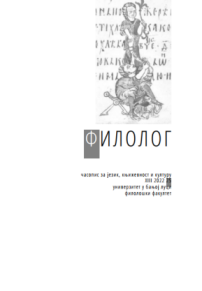INCORPORATING MULTILITERACIES AND MULTIMODALITY INTO LITERACY INSTRUCTION FOR EFL STUDENTS AT A TERTIARY LEVEL: A CASE STUDY
INCORPORATING MULTILITERACIES AND MULTIMODALITY INTO LITERACY INSTRUCTION FOR EFL STUDENTS AT A TERTIARY LEVEL: A CASE STUDY
Author(s): Dijana Prodanović Stankić, Bojana JakovljevićSubject(s): Language studies, Language and Literature Studies, Foreign languages learning
Published by: Филолошки факултет Универзитета у Бањој Луци
Keywords: EFL; multiliteracies; multimodal approach; reading skills; comprehension;
Summary/Abstract: In EFL, developing literacy is primarily based on improving reading skills, which is quite problematic for millennials, regardless of their proficiency levels, since they seem to be more used to video input than texts. Drawing on the theoretical concept of multiliteracies (New London Group 1996), introduced to outline a specific pedagogic framework for rethinking the future of language education, this paper discusses the results of a study conducted at the Department of English Studies, University of Novi Sad. The main aim of the study was to identify and determine the primary problems students majoring in English have while doing reading text-based comprehension tasks, and to compare the results with comprehension tasks that combine text and video input. Even though teaching and learning are by definition multimodal, particularly in the field of EFL, since both processes imply the use of different modes (speech, writing, gesture, image, sound), at higher levels of education these modes do not seem to be equally present. This study suggests some theoretical and practical directions towards integrating multimodal approaches in developing literacy in order to promote positive learning outcomes of EFL students.
Journal: Филолог – часопис за језик, књижевност и културу
- Issue Year: 13/2022
- Issue No: 25
- Page Range: 68-85
- Page Count: 18
- Language: English

